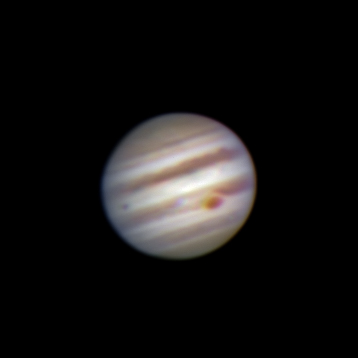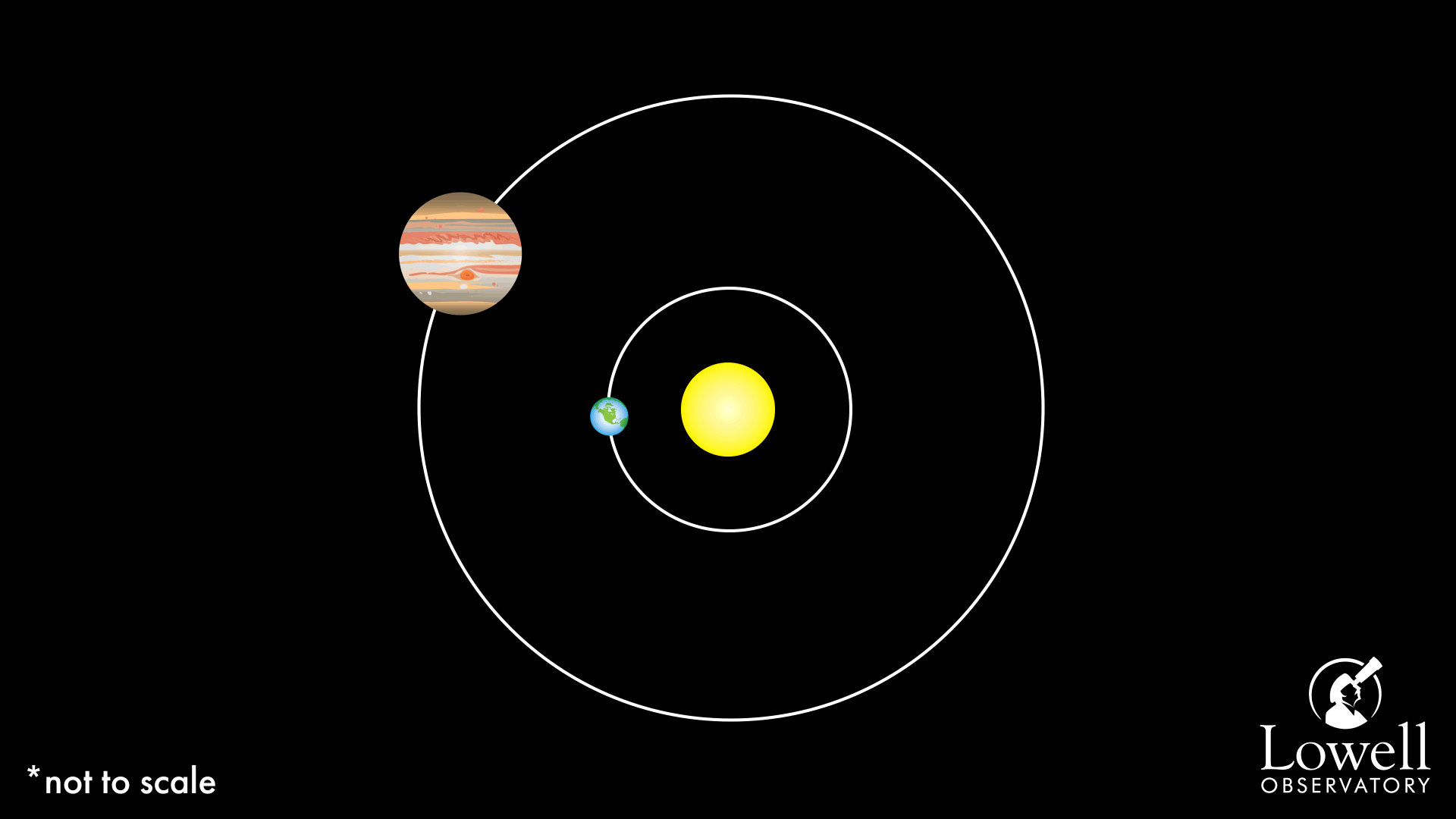
Jupiter, imaged with the Large Monolithic Imager on the Lowell Discovery Telescope, Credit LLama/Lowell Obs/NSF
Flagstaff, AZ. – Jupiter will soon appear bigger and brighter than it has been for 70 years, and Lowell Observatory is celebrating with nightly public telescope viewing of the planet and its moons. For the next several weeks, visitors will be able to gaze at this fabled gas giant and see its distinct layer cake of clouds, as well as several of its moons.
This Jupiter viewing season centers around the planet’s September 26 opposition. The term opposition indicates when a planet is opposite the Sun from Earth, a time when the planet and Earth also generally make their closest approach to each other. Jupiter is in opposition every 399 days, a little more than once per year.
Since the orbits of the planets–including Jupiter–are not perfect circles, their distance from the Sun–and each other–varies over time. The distance between Jupiter and the Sun, for instance, fluctuates by 10%. During this year’s opposition, Jupiter will also be approaching perihelion (its closest point to the Sun), which happens on January 20, 2023. This means that Earth will lie between the Sun and Jupiter near the time Jupiter makes its closest approach to the Sun. The result: Jupiter will come closer to Earth than it has since 1951, and it won’t get this close again for 107 years (the year 2129). This proximity means Jupiter will appear like a very bright star in the eastern sky at sunset.
 To optimize viewing of Jupiter, Lowell Observatory will point several of its stunning public telescopes at the so-called King of the Planets. From the historic 24-inch Clark Refractor to the array of high-tech instruments at the Giovale Open Deck Observatory (GODO), visitors will have the chance to explore Jupiter up close. The observatory is currently open to the public every night except Tuesday and will offer nightly viewing of Jupiter—weather permitting—for several weeks. Regular admission rates apply.
To optimize viewing of Jupiter, Lowell Observatory will point several of its stunning public telescopes at the so-called King of the Planets. From the historic 24-inch Clark Refractor to the array of high-tech instruments at the Giovale Open Deck Observatory (GODO), visitors will have the chance to explore Jupiter up close. The observatory is currently open to the public every night except Tuesday and will offer nightly viewing of Jupiter—weather permitting—for several weeks. Regular admission rates apply.
“From the details in its cloud belts to the daily changes in the positions of its moons, Jupiter is a sight to behold in even the smallest telescopes,” says Lowell’s Chief Marketing and Revenue Officer Dr. Danielle Adams, “but observing Jupiter up close with the 24-inch Clark Refractor is an experience you will remember forever.”
More About Jupiter
- Jupiter is the largest planet in the solar system.
- Jupiter is one of the four gas giant planets, along with Saturn, Uranus, and Neptune.
- Jupiter, like the other gas giants, has rings.
- Jupiter is one of five planets visible to the unaided eye, along with Mercury, Venus, Mars and Saturn.
- Jupiter has the shortest day of any of the planets, lasting only 9 hours and 55 minutes.
- Jupiter has 82 confirmed and named moons, though scientists predict many more exist.
- 17th–century astronomers calculated the speed of light by studying Jupiter’s four large moons.
- Jupiter has the strongest magnetic field in the solar system. It is responsible for enormous auroral displays that can create hundreds of times more energy than Earth’s northern and southern lights.
###
About Lowell Observatory
Lowell Observatory is a private, nonprofit 501(c)(3) research institution, founded in 1894 by Percival Lowell atop Mars Hill in Flagstaff, Arizona. The Observatory has been the site of many important discoveries, including the first detection of large recessional velocities (redshift) of galaxies by Vesto Slipher in 1912-1914 (a result that led ultimately to the realization that the universe is expanding), and the discovery of Pluto by Clyde Tombaugh in 1930. Today, the Observatory’s 14 tenured astronomers use ground-based telescopes around the world, telescopes in space, and NASA planetary spacecraft to conduct research in diverse areas of astronomy and planetary science. Lowell Observatory currently operates multiple research instruments at its Anderson Mesa station, east of Flagstaff, and the 4.3-meter Lowell Discovery Telescope near Happy Jack, Arizona. Prior to the pandemic, the observatory also welcomed more than 100,000 guests per year to its Mars Hill campus in Flagstaff, Arizona, for a variety of educational experiences, including historical tours, science presentations, and telescope viewing.
###
Media Contact
Kevin Schindler, PIO & Historian
Lowell Observatory
kevin@lowell.edu
(928) 233-3210